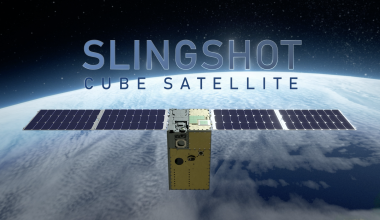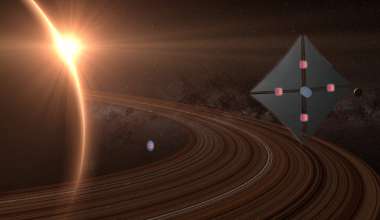Scintillation in the ionosphere is a phenomena that affects radio signals, disrupting communications and GPS navigation. This joint mission is scheduled to be deployed off the International Space Station in 2019 and will operate for one year.
“The SPORT mission leverages our 40-years of technical expertise in designing, building and launching space environment sensors,” said Dr. Rebecca Bishop, Aerospace’s lead on this project. “For this mission, we will monitor the background conditions pre-scintillation and determine the presence and evolution of scintillation events. Being able to forecast scintillation is the holy grail of our whole field.”
Brazil will build and operate the six-unit (6U) CubeSat and maintain the ground observation network of radars, imagers, and scintillation monitors. NASA is coordinating the launch and the CubeSat instruments, which will be provided by Aerospace, NASA, and university partners. Both Brazil and the U.S. will analyze the data and collaborate on individual studies.
Due to a large part of Brazil being located near the magnetic equator, and a feature known as the South Atlantic Anomaly, Brazil experiences more scintillation than many other countries.
According to the National Oceanic and Atmospheric Administration, “Severe scintillation conditions can prevent a GPS receiver from locking on to the signal and can make it impossible to calculate a position. Less severe scintillation conditions can reduce the accuracy and the confidence of positioning results.”
Dr. Luis Loures, head of the Aerospace Department at Brazil’s Aeronautical Institute of Technology, gave an example of why the study of scintillation is important to Brazil.
“Brazil has a strong and modern agribusiness, which is always trying to increase the productivity of the crops,” he said. “One way this can be accomplished is by the use of precision tools [such as embedded GPS receivers] to work the fields. The knowledge of the correct position is mandatory for the automatization of tractors and fieldsprayers, for instance.”
Aerospace’s contribution to SPORT is the 0.153 kg Compact Total Electron Content Sensor (CTECS), which is a GPS radio occultation (RO) sensor that Aerospace adapted from a commercial receiver by adding special software and a custom antenna.
“Historically, GPS RO sensors are on the order of 5 kg and 20 watts, which is basically the same size and twice the power of a 3U CubeSat,” Bishop said. “We were developing this as a low-cost, low-mass, low-power GPS RO sensor for a CubeSat.”
The SPORT mission partners are NASA’s Marshall and Goddard Space Flight Centers, Brazilian National Institute for Space Research, Technical Aeronautics Institute under the Brazilian Air Force Command Department, The Aerospace Corporation, University of Texas at Dallas, University of Alabama in Huntsville, and Utah State University.
About The Aerospace Corporation
The Aerospace Corporation is a leading architect for the nation’s space programs, advancing capabilities that outpace threats to the country’s national security while nurturing innovative technologies to further a new era of space commercialization and exploration. Aerospace’s national workforce of more than 4,800 employees provides objective technical expertise and thought leadership to solve the hardest problems in space and assure mission success for space systems and space vehicles. For more information, visit www.aerospace.org. Follow us on LinkedIn and on X: @AerospaceCorp.




